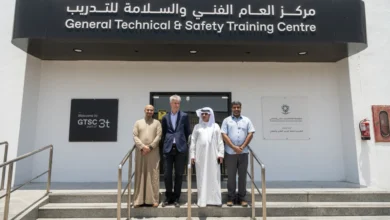
What Other Cities Can Learn From Abu Dhabi’s Effortless Service Blueprint
Abu Dhabi has changed how its citizens connect with public services through its Roadmap for Effortless Government Services. Today, 98% of government transactions happen through digital channels like mobile apps and online platforms. The Abu Dhabi Effortless Program for Customer Experience, which started in March 2022, wants to make the emirate a world leader in customer service. Their goal is to achieve the lowest effort score among nations using this measure.
The program has shown great results across all 67 government entities in the Emirate. Government procedures are now simpler, which led to 400,000 fewer service center visits and a 64% drop in customer requests. The Department of Government Enablement – Abu Dhabi launched the 2nd Abu Dhabi Effortless Customer Experience Awards to recognize service excellence.
Abu Dhabi’s vision to become the world’s most effortless government drives this focus on simple public services. The city’s personalized development programs put people first as they are the key to transforming public services. Other cities can learn valuable lessons from this integrated way of improving government service delivery systems.
Understanding Abu Dhabi’s Vision for Effortless Services
Image Source: Kazinform
Abu Dhabi has created a revolutionary approach to government service delivery with its Effortless Program. This breakthrough stands as evidence of the emirate’s steadfast dedication to excellent public service.
The origin of the Effortless CX Program
The Abu Dhabi Effortless Program emerged from a bold government strategy to create uninterrupted customer experience at every touchpoint. The program started in 2020 and launched in March 2022 as part of Abu Dhabi’s push toward digital transformation and service excellence. The Department of Government Enablement led this initiative and worked with 67 government entities to build a unified customer experience approach.
The program builds on a simple idea: government services should be easy to use and highly satisfying. This philosophy led to new frameworks that measure and improve service delivery at every government touchpoint.
What ‘effortless’ means in public service
Abu Dhabi’s vision of ‘effortless’ goes beyond simple convenience. It represents a radical alteration in how government services work. The program uses the Customer Effort Score (CES) to measure how easily customers can complete government transactions.
The effortless approach removes unnecessary complexity and creates user-friendly service pathways. Abu Dhabi has optimized thousands of government processes and switched from reactive to proactive service models. Digital transformation has made 98% of government services available through digital channels, which reduces the need to visit offices in person.
Why Abu Dhabi aimed to lead in customer experience
Abu Dhabi wants to become the world’s most effortless government to boost competitiveness, draw investment, and make life better for residents and citizens. The emirate leads customer experience breakthroughs to set new global standards for government service excellence.
Better customer experience drives economic growth and social well-being. Abu Dhabi’s leadership knows that simple government services help create businesses and promote civic engagement, which creates a more dynamic and prosperous society.
Abu Dhabi’s focus on people development and capacity building shows that real service transformation needs both technology and human expertise. This integrated approach means the emirate’s effortless vision covers the entire service ecosystem.
The Strategic Pillars Behind the Transformation
Image Source: Kanebridge News Middle East
Abu Dhabi’s customer experience transformation success stems from a framework built on five strategic pillars. The government took an integrated approach that covered the customer’s entire experience through four key areas: direction, design, development, and delivery.
CX policy and governance frameworks
A complete customer experience policy and guidebook sits at the heart of Abu Dhabi’s transformation. This document clearly defines each stakeholder’s role in service delivery. The framework sets standard protocols and builds awareness through targeted training, detailed guidelines, and incentives for CX professionals. It promotes effective teamwork among government entities and creates a unified path to customer service excellence.
Service prioritization and cataloging
The government built a strong service catalog that documents all public services, including digital and non-digital channels. This organized method helps Abu Dhabi pick high-priority services each year based on data-driven criteria, which ensures proper resource allocation. The catalog helps the government set clear goals for improvement and focus transformation efforts where they matter most.
Capacity building through competency frameworks
People drive public service transformation in Abu Dhabi. The government created a tailored competency framework to review and improve customer service representatives’ skills. This groundbreaking program reviewed more than 6,000 staff members and created an overall professionalism index. The assessment found skills gaps and shaped targeted training programs for about 2,000 key employees.
Design labs for service co-creation
Design labs showcase Abu Dhabi’s innovative approach. These creative spaces make collaboration easier between government entities and citizens who work together to design services. The labs use an integrated design method that handles both single-entity and multi-entity services. This ensures services meet real user needs rather than just administrative convenience.
Measurement and feedback systems
Abu Dhabi created trailblazing measurement systems that focus on the Customer Effort Score (CES) to calculate success and find areas for improvement. This measurement model reviews both perception and operational measures, which creates a balanced view of public services. The government also uses systems like Customer Pulse to gather direct feedback, which allows continuous service improvements based on real user experiences.
Key Success Factors That Enabled Abu Dhabi’s Model
Abu Dhabi has achieved remarkable success in making government services effortless for its citizens. Multiple key factors have worked together to create lasting change.
High-level leadership and strategic alignment
Top government leadership’s steadfast dedication laid the foundation for Abu Dhabi’s success. Executive sponsorship made sure customer-focused initiatives got the resources and attention they needed. Government entities lined up their strategies to move in one direction, which put customer experience at the heart of Abu Dhabi’s governance model.
Whole-of-government collaboration
Abu Dhabi went beyond traditional department boundaries to promote unprecedented teamwork among its 67 government entities. This approach eliminated service silos that usually make life difficult for citizens. The government created shared service standards and performance metrics to maintain consistency at every touchpoint, whatever entity provided the service.
Empathy-driven service design
Abu Dhabi’s transformation centers on understanding what citizens really need. The government moved from focusing on processes to creating solutions that put people first. Services now handle life events instead of paperwork requirements, which creates a more user-friendly experience.
Scalable and replicable frameworks
Abu Dhabi developed standardized yet flexible frameworks to spread innovations quickly. These frameworks offer well-laid-out methods that work across different service areas while adapting to specific needs. This mix of standardization and flexibility maintains consistency and relevance throughout the government system.
Lessons Other Cities Can Apply from Abu Dhabi
Other cities can learn valuable lessons from Abu Dhabi’s successful government service transformation model. The emirate’s approach provides practical insights that work well in a variety of urban settings.
Start with a clear CX vision and measurable goals
Cities need to anchor their AI initiatives in clearly defined public outcomes and policy goals. Abu Dhabi’s 2019 Customer Experience Policy and Guidebook outlines roles and sets service delivery standards. This mission-first mindset helps cities choose the right projects and measure their results effectively.
Invest in people and digital infrastructure
Cities must help their public workforce understand AI better—from IT teams to frontline workers. Abu Dhabi’s training program helped customer experience agents develop new skills that led to world-class service delivery. A resilient infrastructure plays a key role because connecting people needs both basic connectivity and advanced computing power.
Design around life events, not departments
Services work better when they focus on life events instead of administrative structures. This approach looks at what happens in people’s lives and understands their emotional needs beyond government interactions. Life events such as “having a baby” can bring together services that were previously separate.
Use data to drive proactive service delivery
Data helps improve policy-making and service delivery when cities collect and analyze it properly. Cities that handle data well get better satisfaction scores from their residents. Abu Dhabi created groundbreaking measurement models that focus on customer effort scores.
Create decentralized innovation ecosystems
Blockchain and decentralized systems can reshape city management by sharing governance among all stakeholders. This setup creates transparent, secure, and auditable processes from public decision-making to policy implementation.
Abu Dhabi leads the world in government service delivery through its Effortless Program. This bold initiative has delivered outstanding results. The program reduced service center visits by 400,000 and cut customer requests by 64%. The transformation of 98% of government transactions into digital channels shows how well the program works.
Several key factors contribute to the emirate’s success. The five strategic pillars create a strong foundation for service excellence. These pillars cover resilient policy frameworks, systematic service cataloging, detailed capacity building, innovative design labs, and informed feedback systems. Cities that want to copy this success should think about adopting similar structured approaches that fit their specific contexts.
Leadership’s steadfast dedication plays a significant role in Abu Dhabi’s transformation trip. High-level strategic coordination and cross-governmental teamwork make such detailed changes possible. Cities worldwide can learn that effective service transformation needs departments to work together while building a culture of cooperation.
Abu Dhabi’s focus on user-focused design stands out as its most valuable asset. Their approach centers on life events and citizen needs instead of administrative structures. Other cities should line up their service models with people’s needs rather than processes.
Abu Dhabi’s approach brings benefits beyond happy citizens. Efficient government services help businesses grow and citizens participate more actively. This accelerates economic growth and social well-being. Cities that follow similar methods will see improved service delivery and develop stronger communities with thriving economies.
Abu Dhabi’s path to becoming the world’s most effortless government exceeds geographical and cultural boundaries. Each city faces unique challenges, but the core principles remain the same – clear vision, investment in people, collaborative governance, and informed decision-making. Cities that apply these lessons will excel in our increasingly






